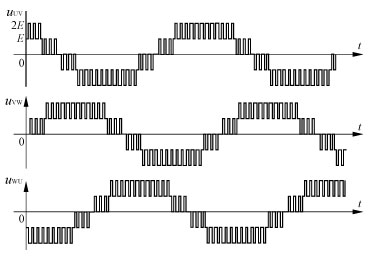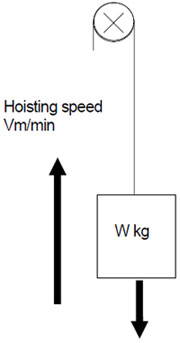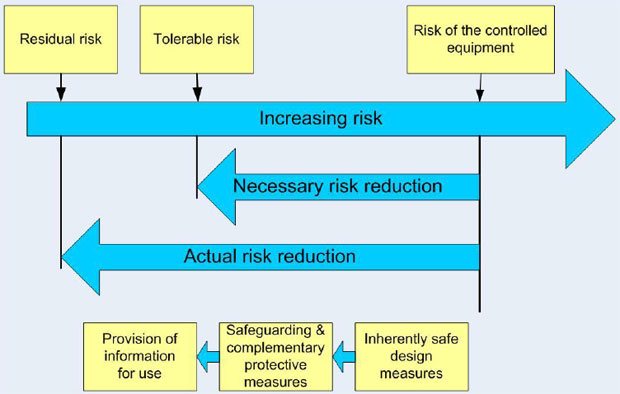Home » Papers
General-purpose motors and vector variable frequency drive (VFD) dedicated motors are three-phase induction motors. These motors mainly consist of a rotary shaft, bearings, stator winding and connection terminals. Vector VFD dedicated motors have an encoder at the rear of their rotary shaft. These components must be inspected periodically to prevent any fault from occurring due to the adverse effects from the operating environment, such as temperature, humidity, dust, dirt and vibration, changes in the parts with time, service life, and other factors.
A variable frequency drive (VFD) is a static unit mainly consisting of semiconductor devices. Daily inspection must be performed to prevent any fault from occurring due to the adverse effects from the operating environment, such as temperature, humidity, dust, dirt and vibration, changes in the parts with time, service life, and other factors.
A variable frequency drive (VFD) is a static unit mainly consisting of semiconductor devices. Daily inspection must be performed to prevent any fault from occurring due to the adverse effects from the operating environment, such as temperature, humidity, dust, dirt and vibration, changes in the parts with time, service life, and other factors.
Before selecting the size of a variable frequency drive (VFD), it is necessary to generally know the working environment, the target work and if the performance and functions are satisfied. Based on this information, choose a suitable motor size and a variable frequency drive or a vector VFD to control the AC motor. In terms of the hardware basics, the same concept can be applied to both general purpose VFDs and vector VFDs.
Vector variable frequency drives frequently perform acceleration/deceleration. Select the most suitable capacity size in accordance with the movement of the machine. To make a right selection, check data on the machine side and the operation pattern beforehand.
Vector variable frequency drives frequently perform acceleration/deceleration. Select the most suitable capacity size in accordance with the movement of the machine. To make a right selection, check data on the machine side and the operation pattern beforehand.
PWM variable frequency drives are most often used in variable torque applications in the 1 to 1,000 hp motor size range. For centrifugal pumps or fans with no static lift, the fluid or air flow provided varies directly with the pump or fan rotational speed. The input power requirement varies as the cube or third power of the speed ratio. Small decreases in equipment rotating speed or fluid flow yield significant reductions in energy use. For example, reducing speed (flow) by 20% can reduce power requirements by approximately 50%.
Variable frequency drive efficiency decreases with decreasing motor load. The decline in efficiency is more pronounced with VFDs of smaller horsepower ratings. As shown in the following example, this reduction in efficiency is not as detrimental as it first seems.
Variable frequency drive efficiency decreases with decreasing motor load. The decline in efficiency is more pronounced with VFDs of smaller horsepower ratings. As shown in the following example, this reduction in efficiency is not as detrimental as it first seems.
Among the most successful strategies managers have at their disposal for controlling electrical energy use and minimizing utility costs is the use of variable frequency drive (VFD). Incorporating variable frequency drives into applications such as fans, pumps, and cooling towers can reduce energy use up to 50 percent at partial loads by matching motor speed to the changing load and system requirements.
They also feature better operator interface features, including:
They also feature better operator interface features, including:
- start, stop and speed adjustment
- reversing and toggling between manual and automatic speed adjustment from an external process control signal
- alpha-numeric display, indicator lights, and meters to provide text information for communication and maintenance
- a front-mounted or cable-connected keypad for input
- input/output terminals available for push buttons, switches and other interface devices
- serial communication port for variable frequency drive configuring, monitoring and controlling using a computer
- loading of parameter settings from one VFD to another
- multi-day timers
- broadcast function to control dozens of VFDs from one advanced operator panel.
The energy saving of variable frequency drives (VFD) in industrial applications is well understood by engineers, but awareness is less widespread at cheque signing level - amongst financial teams, senior management and purchasing departments. The systems thinking and good communication is the key to tackling this problem and improving everybody's bottom line.
China industry and commerce can save 30% of its energy costs, which represents a significant 3% addition to the bottom line. All it has to do is implement a single, simple energy saving measure - fitting VFDs to its electric motors. However, I'm quite conscious that there are plenty of technologies out there claiming to be the panacea of all environmental ills. But in the case of the variable frequency drive, there is a real, mathematically demonstrable, argument.
China industry and commerce can save 30% of its energy costs, which represents a significant 3% addition to the bottom line. All it has to do is implement a single, simple energy saving measure - fitting VFDs to its electric motors. However, I'm quite conscious that there are plenty of technologies out there claiming to be the panacea of all environmental ills. But in the case of the variable frequency drive, there is a real, mathematically demonstrable, argument.
Variable frequency drives (VFD) supply ac induction motors with Pulse Width Modulation (PWM) voltage, which is non-sinusoidal, we called it PWM VFD. Measurements of the PWM voltages must be taken with proper equipments in order to be reliable. Modern digital measurement instruments that are able to read true rms values must be used. Some of them will not read the fundamental component of a PWM waveform though. Harmonic measurement instruments with fast enough sampling rate are capable of reading both rms and fundamental values of voltage, current and power. An oscilloscope with isolated probes and proper bandwidth is appropriate in most cases.


There are some limitations of using variable frequency drives (VFD) in relation to specific applications. These should be taken into account before making the decision to change to variable speed control.
No flow conditions: a variable frequency drive controlled pump cannot deliver the same function as a control valve at no flow or near zero flow conditions. A control valve can, and generally does, serve as a first line of defense as a shut-off valve and back-flow prevention. If a throttling valve is not used, the process designer will have to consider using an automated auxiliary valve on the pump discharge that will close when a no-flow condition is required.
No flow conditions: a variable frequency drive controlled pump cannot deliver the same function as a control valve at no flow or near zero flow conditions. A control valve can, and generally does, serve as a first line of defense as a shut-off valve and back-flow prevention. If a throttling valve is not used, the process designer will have to consider using an automated auxiliary valve on the pump discharge that will close when a no-flow condition is required.
Then controls: and Maher's observation is that, while variable frequency drives tend to be thought of as the first port of call, sometimes there are simpler options. For example, with conveyors, if the objective is on/off only, an optical sensor and switching on clear conveyor countdown may well be enough.
Returning to variable frequency drives, however, the biggest barriers to uptake that could transform industry's energy efficiency are twofold. First, businesses' short termism means that many are reluctant to invest at all, no matter how robust the proposition. They prefer instead to go the cost-cutting route. And second, purchasing managers' unflinching focus on how much motor systems cost to buy, rather than to run – in spite of the proven importance of the latter – forces exclusion of any add-ons.
Energy saving is making yourself more competitive in preparation for growth, cost saving is not spending but, instead, laying people off and reducing the business' ability to grow. It makes no more sense than purchasing looking only at the cost line.
Returning to variable frequency drives, however, the biggest barriers to uptake that could transform industry's energy efficiency are twofold. First, businesses' short termism means that many are reluctant to invest at all, no matter how robust the proposition. They prefer instead to go the cost-cutting route. And second, purchasing managers' unflinching focus on how much motor systems cost to buy, rather than to run – in spite of the proven importance of the latter – forces exclusion of any add-ons.
Energy saving is making yourself more competitive in preparation for growth, cost saving is not spending but, instead, laying people off and reducing the business' ability to grow. It makes no more sense than purchasing looking only at the cost line.
This paper provides guidelines on functional safety considerations when selecting and integrating a variable frequency drive (VFD) system into the control system of a machine. Functional safety is that aspect of safety that relies upon the correct functioning of a control system. In machinery applications, it is typically associated with preventing injury arising out of contact with moving mechanical parts. Functional safety is distinct from other aspects of safety, such as the use of fixed guards to physically prevent access to moving mechanical parts, or measures to prevent exposure to the live parts of electrical circuits.
In identifying factors to consider when selecting a variable frequency drive system and integrating it into the control system of a machine, this guide refers to various functional safety standards that are relevant to variable frequency drive systems and the safety-related control systems into which they can be integrated. It also explains some of the common terminology that these standards use.
In identifying factors to consider when selecting a variable frequency drive system and integrating it into the control system of a machine, this guide refers to various functional safety standards that are relevant to variable frequency drive systems and the safety-related control systems into which they can be integrated. It also explains some of the common terminology that these standards use.
Featured Articles
Variable Frequency Drive Sizing
 Before selecting the size of a variable frequency drive (VFD), it is necessary to generally know the working environment, the ...
Before selecting the size of a variable frequency drive (VFD), it is necessary to generally know the working environment, the ...
 Before selecting the size of a variable frequency drive (VFD), it is necessary to generally know the working environment, the ...
Before selecting the size of a variable frequency drive (VFD), it is necessary to generally know the working environment, the ...Variable Frequency Drive Basic Safety ...
 This paper provides guidelines on functional safety considerations when selecting and integrating a variable frequency drive ...
This paper provides guidelines on functional safety considerations when selecting and integrating a variable frequency drive ...
 This paper provides guidelines on functional safety considerations when selecting and integrating a variable frequency drive ...
This paper provides guidelines on functional safety considerations when selecting and integrating a variable frequency drive ...
Variable Frequency Drives control AC motor for energy savings by adjustable speed, for short VFD, also named variable speed drives and frequency inverter.
